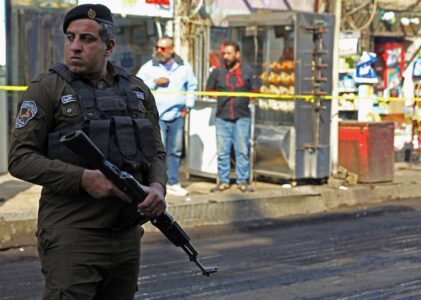
Islamic State terrorist group is regrouping in northern Iraq and relying on women operatives
Islamic State group (IS) militants have been regrouping in northern Iraq and become heavily reliant on women to secure logistical support for their operatives in the Hamrin Basin, Iraqi military commanders told Middle East Eye.
Following the group’s 2017 territorial defeat in Iraq, IS militants have largely been restricted to a triangle of territory between the governorates of Salah al-Din, Diyala and Kirkuk, including the Hamrin mountains.
The Hamrin Basin, as the area is known, is rugged and impenetrable. It is one of the largest and most dangerous havens in which radical Sunni and Kurdish armed groups have concentrated for decades, and where IS fighters fall back to whenever security becomes too tight in other areas.
The area is caught between the jurisdictions of the Iraqi federal security forces and those of the Kurdistan Regional Government (KRG), the Peshmerga.
A marked increase in IS activity north of Baghdad has been recorded by field military commanders over the past month. The militant group claimed responsibility for three major attacks in recent weeks, including a double suicide bombing in a Baghdad market that killed 32 people on 21 January.
Since that attack, 11 Hashd al-Shaabi paramilitary fighters were killed in al-Eith, east of Salah al-Din, and five others in Naft Khana, east of Diyala, commanders told MEE.
“We recorded a remarkable increase in the organisation’s activities in these areas during the last month, compared to the months preceding it. IS carried out three big operations and this is something that cannot be overlooked or ignored,” said a top military commander, speaking on condition of anonymity.
“They still pose a real threat, but their current attacks are aimed only at proving their existence, as the organisation is no longer able to hold territory.”
In return, international and Iraqi forces have stepped up efforts to target the militant group. Dozens of IS fighters have been arrested or killed in and around the Hamrin Basin over the past two weeks.
Abu Yasser al-Issawi, “deputy caliph” of IS, was among those killed last week in an air strike.
Military commanders told MEE that Issawi and nine other IS leaders were killed in the Qouri al-Shay valley, south of Kirkuk.
The valley is “one of the most important” supply routes for IS in northern Iraq, linking the governorates of Kirkuk and Diyala and crossing the Hamrin mountain range, commanders said.
These mountains are around 25-30km long and 7-8km deep, and stretch between the governorates of Salah al-Din and Sulaymaniyah to the east and west, Kirkuk in the north, and Diyala to the south.
“These areas are very rugged, uninhabited and difficult to hold, and this is what IS detachments use to deliver supplies or transfer them between Kirkuk and Diyala,” Brigadier General Rafi Saeed, who commands the 3rd Brigade of the Rapid Intervention Forces deployed in the area, told MEE.
“We have identified this vulnerability. We have carried out several operations in the area, but all operations last for a day or two and end. We have not been issued orders to hold this valley despite the availability of armaments and numbers pf Iraqi armed forces.”
Source: Middle East Eye





